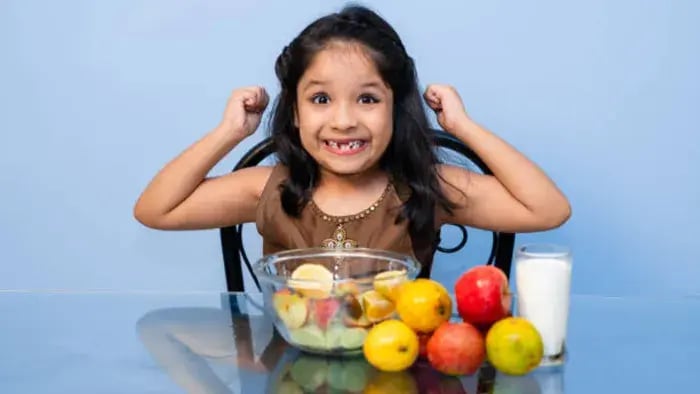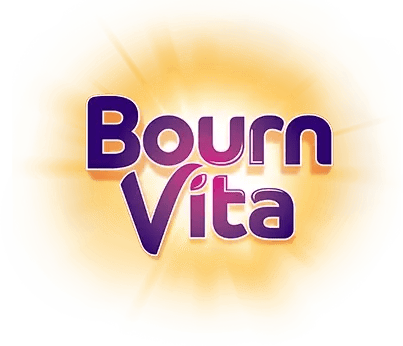- Build Around Indian Staples First
- Respect Appetite and Hunger Cues
- Include One Power Food in Every Meal
- Make Water the Default Drink
- Plan Snacks Like Mini-Meals
- Don’t Ignore Iron and Calcium Sources
- Weekend Planning, Weekday Peace
Introduction

Getting kids to eat healthy can feel like a moving target, what works for a 5 year old may not work for a 15 year old and what your child loved last week might be off the table today. As they grow their bodies, routines and food preferences change. That’s why creating a diet chart is about building habits that work for their age, taste and daily needs.
For younger kids it might mean making meals colorful and fun to spark interest. For tweens it’s about creating balance between growing independence and gentle guidance. And for teens it often comes down to helping them fuel their day with the right mix of energy, focus and comfort.
A good food routine is about understanding what your child needs most at their stage and shaping meals that support that, whether it’s protein for strength, fibre for digestion or iron for focus. Add in hydration, sleep and the occasional homemade snack and you’ve got a plan that’s not just healthy but sustainable.
So, here are some diet tips that go beyond the plate and help your child build a strong nourishing connection with food, one bite at a time.
7 Healthy Diet Chart Tips for Kids, Tweens & Teens That Actually Work

Healthy eating is about building habits that grow with your child. As kids move from early childhood into their tweens and teens, their nutritional needs change, but one thing stays the same: their growing bodies and minds need real, balanced food. From helping them focus in school to keeping their energy levels steady, food plays a powerful role in shaping their everyday life.
Build Around Indian Staples First
Your child’s diet doesn’t need to revolve around fancy grains or imported snacks. Start with what you already know: dal, chawal, roti, seasonal sabzis, and homemade curd. According to FSSAI, these foods offer the right mix of carbohydrates, proteins, fiber, and probiotics. Add a bowl of mixed dals for protein, a spoon of ghee on roti for healthy fats, and a serving of dahi to support digestion. Keeping it simple helps children relate to their meals, making them more likely to eat well without resistance.
Respect Appetite and Hunger Cues
Kids often eat differently every day, and that’s okay. Some days they’re starving; others, they barely touch their plate. Avoid creating food battles, instead, teach them to listen to their bodies. If they say they’re full, respect it. According to a study done by, Diabetes Spectr. 2017, over time, this builds a healthy relationship with food and prevents mindless eating. Offer small portions, allow second servings, and avoid labeling them as “fussy.” It's about trust, not control.
Include One Power Food in Every Meal
Even if it is a boiled egg at breakfast, a handful of peanuts in a tiffin, or a bowl of rajma at dinner, one power-packed food can do wonders. As per the Dietary Guidelines for Indians, pick nutrient-dense options like paneer, sprouts, bananas, or ragi. These provide essential vitamins, minerals, and protein. For tweens and teens especially, this helps support growth spurts, active lifestyles, and concentration at school. It also keeps snacking urges in check.
Make Water the Default Drink
Between packaged juices, milkshakes, and soft drinks, it’s easy for kids to forget about plain water. As per the research done by Nutrients. 2019, hydration supports digestion, focus, and even mood. Encourage water breaks between activities, keep a colorful bottle handy, and lead by example. For teens who dislike water, try infusing it with fruits or adding coconut water as a natural option. Avoid normalizing sugary drinks, even if they’re “fortified.”
Plan Snacks Like Mini-Meals
Chips and biscuits may be quick fixes, but they often leave kids cranky and sluggish. According to the study done by National Institute on Aging, try pairing protein with fiber: roasted chana with murmura, fruit with a cheese cube, or homemade laddoos with dry fruits. This combo fuels them for longer hours and prevents sugar crashes. Teach older kids how to prep simple snacks — it builds independence and nutrition awareness.
Don’t Ignore Iron and Calcium Sources
Research conducted by, J Obstet Gynaecol India. 2022 show that teen girls especially need iron-rich foods to prevent fatigue and support development. Add leafy greens, jaggery, dates, or rajma regularly. Calcium from dairy, sesame seeds, and ragi helps strengthen bones and teeth. A sprinkle of til in sabzis or a ragi dosa for breakfast can go a long way. Use traditional knowledge to your benefit, grandma’s food wisdom holds scientific value too.
Weekend Planning, Weekday Peace
As per the Dietary Guidelines for Indians, take 30 minutes over the weekend to plan 4–5 meals for the week ahead. It saves time, cuts down on junk choices, and ensures variety. Get your child involved, ask what fruit they’d like this week, which dal they’re okay with, or what healthy tiffin they want to carry. When kids feel included, they become more open to trying new things.
Conclusion

A good diet chart for kids, tweens, and teens is about flexible structure. Every child is different, and what works for one might not work for another. But when you focus on simple meals, consistent habits, and gentle encouragement, you help your child create a foundation of health that lasts into adulthood. Keep it real, keep it fun, and most importantly, keep it sustainable.
Her love for storytelling began with reading her grandfather’s speeches, where Tarishi saw the power of words in creating lasting memories. Combining her passions for food and writing, she has turned her life into a fulfilling path of sharing stories that celebrate flavours and how food brings communities together.
The views expressed are that of the expert alone.
The information provided in this content is for informational purposes only and should not be considered a substitute for professional medical advice, diagnosis, or treatment. Always seek the advice of your physician or another qualified healthcare provider before making any significant changes to your diet, exercise, or medication routines.
References
https://pmc.ncbi.nlm.nih.gov/articles/PMC6356561/
https://www.nin.res.in/dietaryguidelines/pdfjs/locale/DGI24thJune2024fin.pdf
















